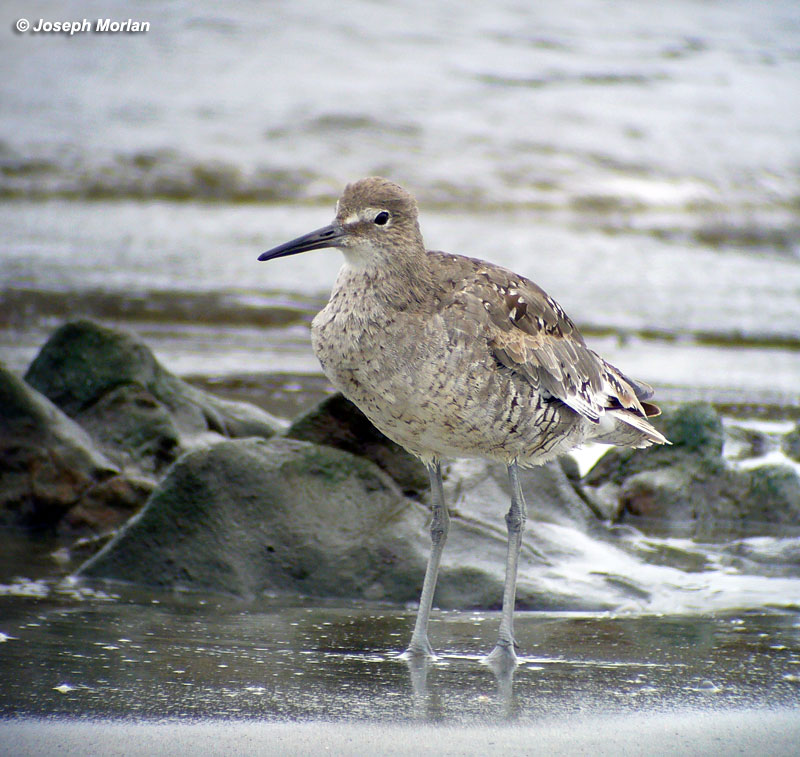
The Willet is a strictly North American bird with two populations. This is the larger "Western Willet" which breeds inland in the Great Basin and Northern Prairies. A smaller nominate race (Eastern Willet) breeds in marshes of the Atlantic coast, from New Brunswick to Tamaulipas. Western Willets, such as this, winter along the Pacific Coast south to South America, as well as along parts of the Atlantic and Gulf Coasts where they may overlap Eastern Willets during migration and winter.
In keeping with the theme of molting adults, this is an adult in transitional plumage between breeding (alternate) and winter (basic) plumages. The breeding feathers or broken and worn while the new basic feather are fresh.
Earlier I commented that the 47th AOU Check-List supplement inserted this species between the Greater and Lesser Yellowlegs. I have been advised that contrary to all reasonable expectations, Greater and Lesser yellowlegs are not each others' closest relatives. Evidently the similarity is due to convergence. Genetic data show that the Willet is more closely related to the Lesser Yellowlegs than either is to Greater Yellowlegs.
More details at: http://www.museum.lsu.edu/~Remsen/SACCprop227.html
Full details of the molecular and morphological study are at: http://individual.utoronto.ca/sergiolp/pdf/Condor2005.pdf
Nevertheless, the Willet is morphologically so different that, until recently it was placed in its own genus. I remain skeptical of the adopted arrangement and note that several alternative Bayesian tree topologies are offered in the Condor paper. E.g. in Figure 1, the tree using nuclear DNA differs substantially from the one using mDNA and does not support such a close relationship between the Willet and the Lesser Yellowlegs.
The statistical methods used to arrive at the various alternative trees are very interesting, but when they are based on only two Willet specimens, one of which has no date or locality information, and when the results are so clearly at odds with common sense, I tend to remain skeptical.
Digiscoped with Panasonic DMC-LZ5 | Nikon FieldScope 3 | 30X WA | hand-held (no adapter)